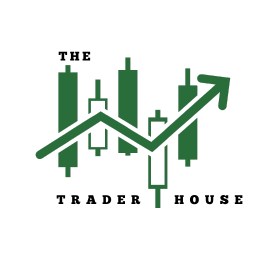
What You Need to Know About the Stock Market April’s 1st Week
Key Economic Events for April First Week 3.31.25
As we venture into the first week of April, it’s crucial for aspiring traders to keep their eyes on key economic events that will greatly influence the stock market. In this post, we’ll break down each day’s significant news and what it might mean for beginners in trading to interpret this information effectively.
Monday: March 31st
Let’s kick off with the Chicago PMI at 9:45 AM. PMI stands for Purchasing Managers’ Index, a vital indicator of the economic health of the manufacturing sector. A forecast at 45.5 suggests a potential contraction, as a number below 50 typically indicates a decline. Understanding PMIs can help you estimate whether business conditions are cooling down or picking up. Keep in mind, market volatility can present both risks and opportunities for new traders.
Tuesday: April 1st
Tuesday is packed with critical announcements:
– 9:00 AM:FOMC Member Barkin speaks. The Federal Open Market Committee (FOMC) members’ speeches can give hints about future monetary policies, potentially affecting currency and stock markets.
– 9:45 AM & 10:00 AM:The Final Manufacturing PMI and ISM Manufacturing PMI reports. Both are indicators of economic health. The forecasts being close to 50 symbolize a balance between contraction and expansion. A takeaway here is that stability might lead to caution among investors regarding aggressive trading.
– 10:00 AM: Job Openings and Labor Turnover Survey (JOLTS) shows the number of job vacancies, offering insight into labor market strength. A stable labor market can mean solid economic health.
– Throughout the Day: Wards Total Vehicle Sales, forecast at 16.1M, reflects consumer confidence; high sales might indicate positive economic sentiment.
Wednesday: April 2nd
– 8:15 AM: The ADP Non-Farm Employment Change is crucial as it predicts U.S. employment changes. Expecting an increase from 77K to 118K could mean job growth, which is generally positive for the economy.
– 10:00 AM: Factory Orders indicate demand for manufactured goods; a drop from 1.7% to a forecast of 0.5% suggests a slowing economy.
– 10:30 AM: Changes in Crude Oil Inventories can affect prices and have broader economic implications.
Thursday: April 3rd
– 8:30 AM: Keep tabs on Unemployment Claims and Trade Balance. A trade deficit decrease from 131.4B to 121.5B can imply improved economic conditions.
– 9:45 AM and 10:00 AM: Services PMIs reflect the broader economy since services compose a significant part of GDP. A decreasing forecast suggests a potential slowdown.
Friday: April 4th
On Friday, economic health indicators like Average Hourly Earnings, Non-Farm Employment Change, and the Unemployment Rate will be crucial. Stable forecasts imply steady conditions, where even small deviations can sway market sentiments. Stay alert for Fed Chair Powell’s speech at 11:25 AM, as it often hints at economic policy directions.
Stepping into Trading
As you’ve seen, understanding economic events and market conditions is not only important but essential for creating informed trading strategies. New traders can benefit greatly from analyzing these indicators and adjusting their activities accordingly.
To gain deeper insights into how these economic indicators affect market trends and your trading success, consider expanding your knowledge with expert-led courses. Start Learning Now to accelerate your trading journey.
Stay updated with us for future insights and trading tips! Subscribe to our email list, and follow us on:
For a further deep dive into economic indicators, visit Investopedia.
Source: Original curated content by The Trader House.







